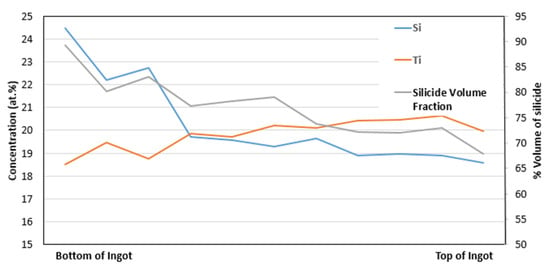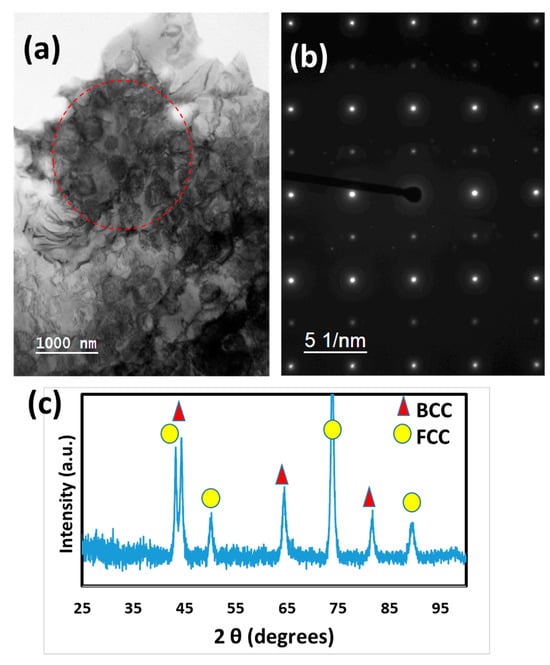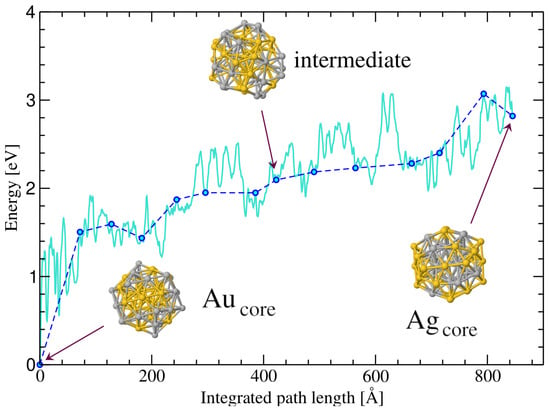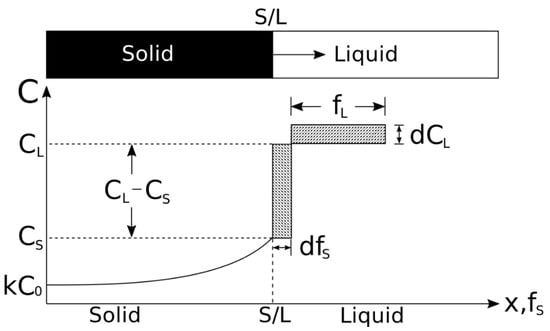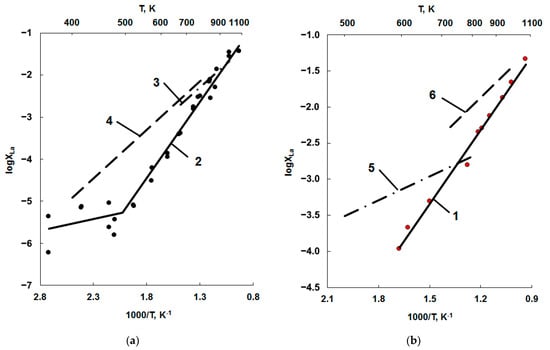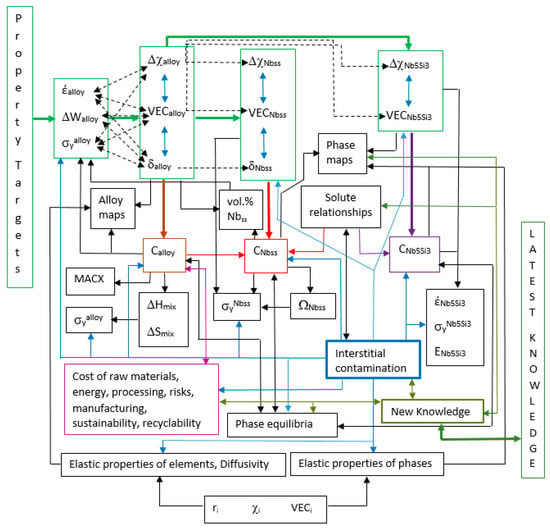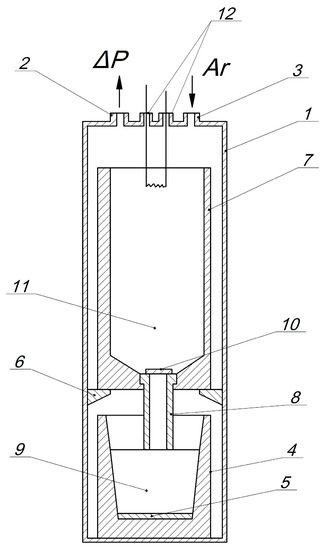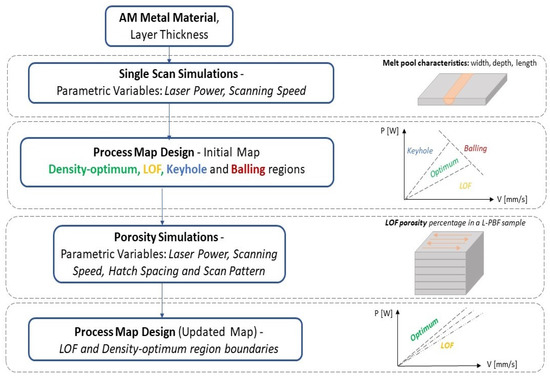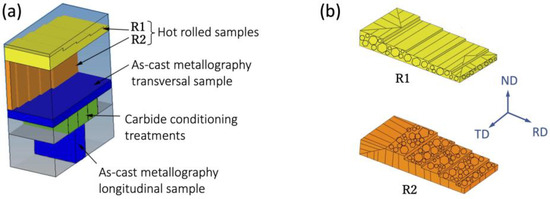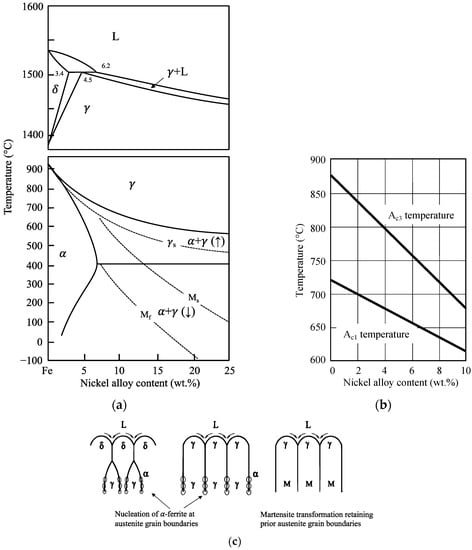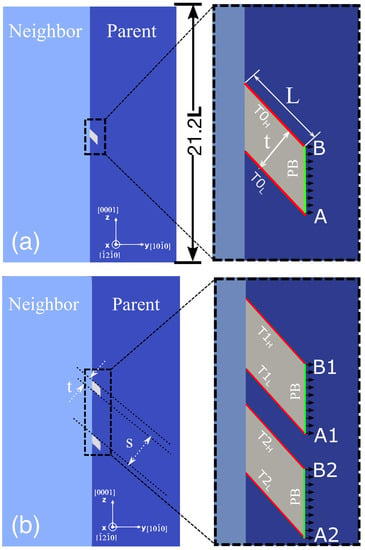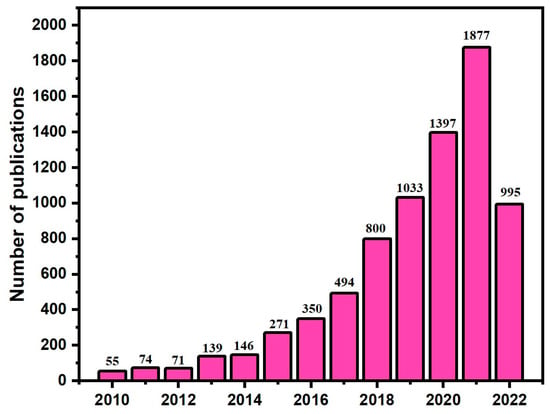Feature Paper Collection of Advanced Research on Alloys
A topical collection in Alloys (ISSN 2674-063X).
Viewed by 39664
Share This Topical Collection
Editors
 Prof. Dr. Nikki Stanford
Prof. Dr. Nikki Stanford
 Prof. Dr. Nikki Stanford
Prof. Dr. Nikki Stanford
E-Mail
Website
Lead Collection Editor
Future Industries Institute, University of South Australia, Building MM, Mawson Lakes Campus, Mawson Lakes, SA 5095, Australia
Interests: alloy design; plasticity, texture, phase transformations, characterisation and microscopy; light alloys; strip casting
Special Issues, Collections and Topics in MDPI journals
 Dr. Chamini L. Mendis
Dr. Chamini L. Mendis
 Dr. Chamini L. Mendis
Dr. Chamini L. Mendis
E-Mail
Website
Collection Editor
Brunel Centre for Advanced Solidification Technology, Brunel University London, London, UK
Interests: alloy development in light alloys; phase transformation in the solid and liquid states; microstructure and mechanical and physical property relationships; mechanical behaviour; materials characterisation; deformation and dislocation structure formations
Special Issues, Collections and Topics in MDPI journals
 Dr. Shashanka Rajendrachari
Dr. Shashanka Rajendrachari
 Dr. Shashanka Rajendrachari
Dr. Shashanka Rajendrachari
E-Mail
Website
Collection Editor
Department of Metallurgical and Materials Engineering, Bartin University, 74100 Bartin, Turkey
Interests: nanomaterials; electrochemical sensors; semiconducting materials; photocatalysis; dye sensitized solar cell; metals and alloys; microstructures; 2D materials; colloids; amorphous materials
Topical Collection Information
Dear Colleagues,
In recent years, the world has witnessed an extraordinary evolution and progress in the invention and improvement of special alloys, such as stainless steel, high-speed steels, oxide dispersed stainless steel, superalloys, high entropy alloys, cermets, and bulk metallic glasses. These new alloys often have complex compositions and microstructres, and have attracted modern-day research due to increasing performance and property demands of modern engineering materials. Designing any alloy with unique and improved properties requires an understanding of the manufacturing process and how this influences the resultant microstructure of the alloy. This naturally leads to the control of properties.
This collection will present up-to-date information about the development of various kinds of alloys, processed by a range of different metallurgical operations. Investigation of their mechanical, surface, and other properties will be presented. This collection will also focus on the structure–property–processing relationship, and the complex chemistry of modern alloys.
The collection could publish research articles along with short communications, and reviews articles. Papers that are closely aligned to metallurgy, material science, and mechanical engineering that describe new alloy design principles, new alloy types, their properties, applications, and structure–property relationships are welcome. The research papers submitted to our collection should contain novel experimental or theoretical results that can influence and motivate the metallurgical research community.
Topics of interest include, but are not limited to:
- Development of a new generation of alloys with novel applications;
- Theoretical and experimental approach to the alloy research to address the structure–property relationship;
- Investigation of various mechanical properties like compressive, tensile, hardness, impact, fatigue, fracture toughness, etc.
- Synthesis of wear and corrosion-resistant alloys with a detailed discussion of different types, mechanisms of wear, and corrosion.
Prof. Dr. Nikki Stanford
Dr. Chamini L. Mendis
Dr. Peng Cao
Dr. Shashanka Rajendrachari
Collection Editors
Manuscript Submission Information
Manuscripts should be submitted online at www.mdpi.com by registering and logging in to this website. Once you are registered, click here to go to the submission form. Manuscripts can be submitted until the deadline. All submissions that pass pre-check are peer-reviewed. Accepted papers will be published continuously in the journal (as soon as accepted) and will be listed together on the collection website. Research articles, review articles as well as short communications are invited. For planned papers, a title and short abstract (about 100 words) can be sent to the Editorial Office for announcement on this website.
Submitted manuscripts should not have been published previously, nor be under consideration for publication elsewhere (except conference proceedings papers). All manuscripts are thoroughly refereed through a single-blind peer-review process. A guide for authors and other relevant information for submission of manuscripts is available on the Instructions for Authors page. Alloys is an international peer-reviewed open access quarterly journal published by MDPI.
Please visit the Instructions for Authors page before submitting a manuscript.
The Article Processing Charge (APC) for publication in this open access journal is 1000 CHF (Swiss Francs).
Submitted papers should be well formatted and use good English. Authors may use MDPI's
English editing service prior to publication or during author revisions.
Keywords
- alloys
- microstructure
- mechanical properties
- new grade alloys
- wear-resistant
- corrosion-resistant
- structure-property relationship
- cutting-edge technology
Published Papers (14 papers)
Open AccessFeature PaperArticle
On the Microstructure and Properties of Complex Concentrated bcc Solid Solution and Tetragonal D8m M5Si3 Silicide Phases in a Refractory Complex Concentrated Alloy
by
Nik Tankov, Claire Utton and Panos Tsakiropoulos
Viewed by 877
Abstract
In this work, the refractory complex concentrated alloy (RCCA) 3.5Al–4Cr–6Ge–1Hf–5Mo–36Nb–22Si–1.5Sn–20Ti–1W (at.%) was studied in the as cast and heat treated conditions (100 h or 200 h at 1500 °C). There was strong macrosegregation of Si in the 0.6 kg button/ingot of the cast
[...] Read more.
In this work, the refractory complex concentrated alloy (RCCA) 3.5Al–4Cr–6Ge–1Hf–5Mo–36Nb–22Si–1.5Sn–20Ti–1W (at.%) was studied in the as cast and heat treated conditions (100 h or 200 h at 1500 °C). There was strong macrosegregation of Si in the 0.6 kg button/ingot of the cast alloy, in which A2 solid solution, D8
m βNb
5Si
3, C14-NbCr
2 Laves phase and Ti
ss and a ternary eutectic of the A2, D8
m and C14 phases were formed. The partitioning of Ti in the as cast and heat treated microstructure and its relationships with other solutes was shown to be important for the properties of the A2 solid solution and the D8
m βNb
5Si
3, which were the stable phases at 1500 °C. The near surface microstructure of the alloy was contaminated with oxygen after heat treatment under flowing Ar. For the aforementioned phases, it was shown, for the first time, that there are relationships between solutes, between solutes and the parameters VEC, Δχ and δ, between the said parameters, and between parameters and phase properties. For the contaminated with oxygen solid solution and silicide, trends in relationships between solutes, between solutes and oxygen content and between the aforementioned parameters and oxygen content also were shown for the first time. The nano-hardness and Young’s modulus of the A2 solid solution and the D8
m βNb
5Si
3 of the as cast and heat-treated alloy were measured using nanoindentation. Changes of nano-hardness and Young’s modulus of the A2 solid solution and D8
m βNb
5Si
3 per solute addition for this multiphase RCCA were discussed. The nano-hardness and Young’s modulus of the solid solution and the βNb
5Si
3, respectively, were 9.5 ± 0.2 GPa and 177.4 ± 5.5 GPa, and 17.55 ± 0.5 GPa and 250.27 ± 6.3 GPa after 200 h at 1500 °C. The aforementioned relationships and properties of the two phases demonstrated the importance of synergy and entanglement of solutes, parameters and phases in the microstructure and properties of the RCCA. Implications of synergy and entanglement for the design of metallic ultra-high temperature materials were emphasised.
Full article
►▼
Show Figures
Open AccessArticle
Oxidation of Fe35Mn21Ni20Cr12Al12 High Entropy Alloy in Dry Air
by
Lamiaa Z. Mohamed, Sanaa S. Abd ElMoamen, Seung Jo Yoo and Mohamed Abdel-Hady Gepreel
Viewed by 485
Abstract
The isothermal oxidation of a Fe
35Mn
21Ni
20Cr
12Al
12 high entropy alloy (HEA) was investigated in dry air for 50 h at 500, 600, and 700 °C after 90% cold rolling. The Fe
35Mn
21Ni
[...] Read more.
The isothermal oxidation of a Fe
35Mn
21Ni
20Cr
12Al
12 high entropy alloy (HEA) was investigated in dry air for 50 h at 500, 600, and 700 °C after 90% cold rolling. The Fe
35Mn
21Ni
20Cr
12Al
12 HEA behaves according to the linear oxidation rate with rate constants of 1 × 10
−6, 3 × 10
−6, and 7 × 10
−6 g/(cm
2·s) for oxidation at 500 °C, 600 °C, and 700 °C, respectively. The activation energy for oxidation of the HEA was calculated to be 60.866 KJ/mole in the 500–700 °C temperature range. The surface morphology and phase identification of the oxide layers were characterized. The formation of MnO
2, Mn
2O
3, Mn
3O
4, Cr
2O
3, and Al
2O
3 in the oxide layers along with Fe
2O
3 is the key to the oxidation mechanism. The elemental mapping and line EDX scans were performed to identify the oxidation mechanisms.
Full article
►▼
Show Figures
Open AccessArticle
Optical Properties of AgAu Alloy Clusters: Effect of Chemical Configuration along a Rearrangement Pathway
by
Hans-Christian Weissker and Florent Calvo
Viewed by 378
Abstract
Gold and silver are, for all their chemical similarities, optically very different. Small Ag clusters show a localized surface-plasmon resonance (LSPR), whereas in Au clusters smaller than about 300 atoms, the resonance is absent due to the coupling with the interband transitions from
[...] Read more.
Gold and silver are, for all their chemical similarities, optically very different. Small Ag clusters show a localized surface-plasmon resonance (LSPR), whereas in Au clusters smaller than about 300 atoms, the resonance is absent due to the coupling with the interband transitions from the d electrons. This opens the possibility of tuning the cluster properties depending on their composition and chemical configuration. Earlier work on AgAu alloy clusters has shown that the outermost shell of atoms is crucial to their overall optical properties. In the present contribution, we consider the optical spectroscopic properties associated with the structural rearrangement in 55-atom AgAu alloy clusters in which the core transforms from pure silver to pure gold. Calculations using time-dependent density-functional theory are complemented by an in-depth study of the subtle effects that the chemical configuration has on the details of the materials’ d bands. Although the cluster surface remains alloyed, the geometrical changes translate into strong variations in the optical properties.
Full article
►▼
Show Figures
Open AccessFeature PaperArticle
Modelling Microstructure in Casting of Steel via CALPHAD-Based ICME Approach
by
Chunhui Luo, Karin Hansson, Zhili Song, Debbie Ågren, Ewa Sjöqvist Persson, Fredrik Cederholm and Changji Xuan
Viewed by 1221
Abstract
Integrated computational materials engineering (ICME) is emerging as an increasingly powerful approach to integrate computational materials science tools into a holistic system and address the multiscale modeling challenges in the processing of advanced steels. This work aims at incorporating macroscopic model (finite element-based
[...] Read more.
Integrated computational materials engineering (ICME) is emerging as an increasingly powerful approach to integrate computational materials science tools into a holistic system and address the multiscale modeling challenges in the processing of advanced steels. This work aims at incorporating macroscopic model (finite element-based thermal model) and microscopic model (CALPHAD-based microstructure model), building an industry-oriented computational tool (MICAST) for casting of steels. Two case studies were performed for solidification simulations of tool steel and stainless steel by using the CALPHAD approach (Thermo-Calc package and CALPHAD database). The predicted microsegregation results agree with the measured ones. In addition, two case studies were performed for continuous casting and ingot casting with selected steel grades, mold geometries and process conditions. The temperature distributions and histories in continuous casting and ingot casting process of steels were calculated using in-house finite-element code which is integrated in MICAST. The predicted temperature history from the casting process simulation was exported as input data for the DICTRA simulation of solidification. The resulting microsegregation by the DICTRA simulation can reflect the microstructure evolution in the real casting process. Current computational practice demonstrates that CALPHAD-based material models can be directly linked with casting process models to predict location-specific microstructures for smart material processing.
Full article
►▼
Show Figures
Open AccessArticle
Solubility of Lanthanum in Liquid Alloys with Gallium and Indium
by
Alexander S. Dedyukhin, Andrey V. Shchetinskiy, Vladimir A. Volkovich and Leonid F. Yamschchikov
Viewed by 840
Abstract
The solubility of lanthanum in indium and Ga–In alloys containing 21.8, 40 and 70 wt. % In was determined experimentally at temperatures up to 1081 K. The low temperature limit depended on the melting point of the alloy. The solubility was measured using
[...] Read more.
The solubility of lanthanum in indium and Ga–In alloys containing 21.8, 40 and 70 wt. % In was determined experimentally at temperatures up to 1081 K. The low temperature limit depended on the melting point of the alloy. The solubility was measured using isothermal saturation and high-temperature filtration methods. The phase composition of solid intermetallic compounds formed in the ternary La–Ga–In systems of various compositions was determined by X-ray diffraction. Activity coefficients of lanthanum in the alloys based on gallium, indium and three Ga–In mixtures (21.8, 40 and 70 wt. % In) were calculated. Temperature dependencies of thermodynamically possible separation factors for the uranium/lanthanum couple in “LiCl–KCl–CsCl melt–liquid alloy” systems were derived for various gallium–indium alloys.
Full article
►▼
Show Figures
Open AccessReview
A Perspective of the Design and Development of Metallic Ultra-High Temperature Materials: Refractory Metal Intermetallic Composites, Refractory Complex Concentrated Alloys and Refractory High Entropy Alloys
by
Panos Tsakiropoulos
Cited by 1 | Viewed by 2378
Abstract
The paper is a personal perspective on the design of metallic ultra-high temperature materials (UHTMs). Specifically, the alloy design “landscape” of metallic UHTMs was considered from the viewpoint of the alloy design methodology NICE. The concepts of synergy, entanglement and self-regulation and their
[...] Read more.
The paper is a personal perspective on the design of metallic ultra-high temperature materials (UHTMs). Specifically, the alloy design “landscape” of metallic UHTMs was considered from the viewpoint of the alloy design methodology NICE. The concepts of synergy, entanglement and self-regulation and their significance for alloy design/development were discussed. The risks, ecological challenges and material-environment interactions associated with the development of metallic UHTMs were highlighted. The “landscape” showed that beneath the complexities of alloy design lies an elegant and powerful unity of specific parameters that link logically and that progress can be made by recognising those interrelationships between parameters that generate interesting, diverse, and complex alloys.
Full article
►▼
Show Figures
Open AccessArticle
Production of Zirconium-Niobium Alloys for Nuclear Reactors Fuel Rods via SHS Process
by
Anatoly Mukhachev, Dmytro Yelatontsev and Olena Kharytonova
Viewed by 1413
Abstract
This article presents the results of studies of the self-propagating high-temperature synthesis (SHS) for obtaining zirconium alloys with niobium by the method of calcium-thermal reduction of nuclear-grade zirconium tetrafluoride in the presence of niobium powder. The optimal heating temperature of the initial charge
[...] Read more.
This article presents the results of studies of the self-propagating high-temperature synthesis (SHS) for obtaining zirconium alloys with niobium by the method of calcium-thermal reduction of nuclear-grade zirconium tetrafluoride in the presence of niobium powder. The optimal heating temperature of the initial charge and the methods of charge mixture with different calcium content were determined. The safety of the SHS process is ensured by the formation of an optimal combustion front of the mixture to remove the released high-pressure gases. A setup for the furnace reduction of zirconium alloys with charge preheating, discharge of molten products into molds of various designs, and control of the time and rate of slag and alloy crystallization has been tested. The required performance of the installation, the degree of transition of zirconium from salt into the alloy, and the purity, structure, and uniformity of the alloy were achieved.
Full article
►▼
Show Figures
Open AccessArticle
Using Molecular Dynamic Simulation to Understand the Deformation Mechanism in Cu, Ni, and Equimolar Cu-Ni Polycrystalline Alloys
by
Sepehr Yazdani and Veronique Vitry
Cited by 4 | Viewed by 2392
Abstract
The grain boundaries and dislocations play an important role in understanding the deformation behavior in polycrystalline materials. In this paper, the deformation mechanism of Cu, Ni, and equimolar Cu-Ni alloy was investigated using molecular dynamic simulation. The interaction between dislocations and grain boundary
[...] Read more.
The grain boundaries and dislocations play an important role in understanding the deformation behavior in polycrystalline materials. In this paper, the deformation mechanism of Cu, Ni, and equimolar Cu-Ni alloy was investigated using molecular dynamic simulation. The interaction between dislocations and grain boundary motion during the deformation was monitored using the dislocation extraction algorithm. Moreover, the effect of stacking fault formation and atomic band structure on the deformation behavior was discussed. Results indicate that dislocations nucleate around the grain boundary in copper, the deformation in nickel changes from planar slip bands to wavy bands, and high density of dislocation accumulation as well as numerous kink and jog formations were observed for the equimolar Cu-Ni alloy. The highest density of the Shockley dislocation and stacking faults was formed in the equimolar Cu-Ni alloy which results in the appearance of a huge gliding stage in the stress–strain curve. The grain boundaries act as a sinking source for vacancy annihilation in Ni and Cu; however, this effect was not observed in an equimolar Cu-Ni alloy. Finally, radial distribution function was used to evaluate atom segregation in grain boundaries.
Full article
►▼
Show Figures
Open AccessArticle
Density-Based Optimization of the Laser Powder Bed Fusion Process Based on a Modelling Framework
by
Harry O. Psihoyos and George N. Lampeas
Cited by 3 | Viewed by 2650
Abstract
One of the main challenges encountered in the Laser-based Powder Bed Fusion (L-PBF) Additive Manufacturing (AM) process is the fabrication of defect-free parts. The presence of defects severely degrades the mechanical performance of AM parts and especially their fatigue strength. The most popular
[...] Read more.
One of the main challenges encountered in the Laser-based Powder Bed Fusion (L-PBF) Additive Manufacturing (AM) process is the fabrication of defect-free parts. The presence of defects severely degrades the mechanical performance of AM parts and especially their fatigue strength. The most popular and reliable method to assess the ability of the employed process parameters for the fabrication of full-density parts is the process windows map, also known as printability map. However, the experimental procedure for the design of the printability maps and the identification of the optimum-density process parameters is usually time-consuming and expensive. In the present work, a modelling framework is presented for the determination of a printability map and the optimization of the L-PBF process based on the prediction and characterization of melt-pool geometric features and the prediction of porosity of small samples of 316L SS and Ti-6Al-4V metal alloys. The results are compared with available experimental data and present a good correlation, verifying the modelling methodology. The suitability of the employed defect criteria for each material and the effect of the hatch-spacing process parameter on the optimum-density parameters are also presented.
Full article
►▼
Show Figures
Open AccessArticle
Microstructure Evolution by Thermomechanical Processing in the Fe-10Al-12V Superalloy
by
Pedro A. Ferreirós, Abraham A. Becerra, Uriel A. Sterin, Martina C. Ávalos, Raúl E. Bolmaro and Gerardo H. Rubiolo
Viewed by 2326
Abstract
Nowadays, great efforts are being made to develop bcc-superalloys for medium- and high-temperature applications. However, the high brittle-to-ductile transition temperatures (BDTT) have restricted their application. Therefore, designing hot-processing routes to obtain a refined grain in these new superalloys is required. Particularly in the
[...] Read more.
Nowadays, great efforts are being made to develop bcc-superalloys for medium- and high-temperature applications. However, the high brittle-to-ductile transition temperatures (BDTT) have restricted their application. Therefore, designing hot-processing routes to obtain a refined grain in these new superalloys is required. Particularly in the Fe-10Al-12V (at%) alloy, we have recently tested the BDTT shifting and, using physical models, it was indicated that a combination of L2
1-precipitate sizes with small grain sizes could shift the BDTT below room temperature. Here, we will present the study that allowed us to design the processing route for grain refinement in the tested superalloy. Molds of different geometry and with metallic and sand walls were used to test two different types of casting. Carbide conditioning treatments for improving the sizes and distribution were studied. The recrystallization process was explored first by hot rolling and post-annealing in stepped geometry samples with two different columnar grain orientations. Finally, we analyzed the grain microstructure obtained along a hot processing route consisting of carbide conditioning treatment, forging into a squared bar, and hot rolling up to a 2.8 mm thickness strip.
Full article
►▼
Show Figures
Open AccessFeature PaperReview
Nickel Alloying in Carbon Steel: Fundamentals and Applications
by
Hardy Mohrbacher and Andreas Kern
Cited by 4 | Viewed by 11353
Abstract
Nickel is an important and widely used alloying element in carbon steels. Some of its prominent metallurgical effects in these steels are moderate solid solution strengthening, mild hardenability and, importantly, a strong promotion of toughness, especially at low temperatures. The first uses of
[...] Read more.
Nickel is an important and widely used alloying element in carbon steels. Some of its prominent metallurgical effects in these steels are moderate solid solution strengthening, mild hardenability and, importantly, a strong promotion of toughness, especially at low temperatures. The first uses of nickel as an alloying element in commercial steel production date back to the early 20th century. The aim of the current review is to give the reader a thorough and concise overview of nickel functionalities relevant to modern carbon steel production. The interaction of nickel with other alloying elements and processing conditions is also considered. Examples will be given demonstrating the advantages of nickel alloying in selected steel grades and applications.
Full article
►▼
Show Figures
Open AccessArticle
Relationship between Manufacturing and Properties of Vacuum Sintered Ti and Ti-6Al-7Nb
by
Leandro Bolzoni, Elisa Maria Ruiz-Navas and Elena Gordo
Cited by 3 | Viewed by 2173
Abstract
Titanium alloys are ideal for a great range of engineering applications; however, their high manufacturing costs hinder their widespread use. This study investigates the relationship between the processing and properties of representative Ti-based materials manufactured via powder metallurgy in order to reduce the
[...] Read more.
Titanium alloys are ideal for a great range of engineering applications; however, their high manufacturing costs hinder their widespread use. This study investigates the relationship between the processing and properties of representative Ti-based materials manufactured via powder metallurgy in order to reduce the manufacturing costs. This is possible as powder metallurgy techniques are near-net shape processes with high yield of material. It is found that the relative density increases with the sintering temperature, and it is slightly higher for longer processing times, reaching values in the 94–97% range. Moreover, homogeneous microstructures are obtained for all the conditions investigated, achieving an equiaxed microstructure for Ti and the typical lamellar structure for the Ti-6Al-7Nb alloy. However, the increment of the temperature also leads to a higher amount of interstitial pick-up, with a maximum increment of 0.21 wt.% and 0.028 wt.% for oxygen and nitrogen, respectively. The highest properties achieved for Ti and Ti-6Al-7Nb are 272 HV (hardness), 17.9 W/m·K (thermal conductivity), and 62.7 μohm·cm (electrical resistivity) and 336 HV, 6.9 W/m·K, and 180 μohm·cm, respectively.
Full article
►▼
Show Figures
Open AccessArticle
Critical Shape for the Growth of Grain Boundary Twin Embryos in Mg and Mg Alloys: Crystal Plasticity Modeling
by
Yanqing Su, M. Arul Kumar and Irene J. Beyerlein
Viewed by 2225
Abstract
Application of polycrystalline hexagonal close packed (HCP) metals in engineering designs has been constrained by their anisotropic responses due to twinning and limited plasticity. In deformation, twins most often initiate at grain boundaries (GBs), and thicken and propagate across the grain. In this
[...] Read more.
Application of polycrystalline hexagonal close packed (HCP) metals in engineering designs has been constrained by their anisotropic responses due to twinning and limited plasticity. In deformation, twins most often initiate at grain boundaries (GBs), and thicken and propagate across the grain. In this work, the GB twin embryos in Mg and Mg alloys, and the conditions that influence their propagation are investigated. Using a micromechanical crystal plasticity model, the role of embryo shape on the driving forces prevailing at the embryo boundaries that could support its expansion is studied. The modeled embryos are either planar, extending more in the shear direction than normal to the twin plane, or equiaxed. Results show that the thinner the embryo, the greater the driving forces for both thickening and forward propagation. Alloys with low prismatic-to-basal critical resolved shear stress (CRSS) ratios promote embryo thickening and large CRSS values for the slip mode that primarily accommodates the twin shear encourage propagation. The neighboring grains with orientations that enable local accommodation of the embryo twin shear by pyramidal slip promote forward propagation but have little effect on thickening. When two like embryos lie along the same GB, their paired interaction promotes forward propagation but hinders thickening.
Full article
►▼
Show Figures
Open AccessReview
An Overview of High-Entropy Alloys Prepared by Mechanical Alloying Followed by the Characterization of Their Microstructure and Various Properties
by
Shashanka Rajendrachari
Cited by 28 | Viewed by 5106
Abstract
Some modern alloys, such as high-entropy alloys (HEAs), are emerging with greater acceleration due to their wide range of properties and applications. HEAs can be prepared from many metallurgical operations, but mechanical alloying is considered to be one of the most simple, economical,
[...] Read more.
Some modern alloys, such as high-entropy alloys (HEAs), are emerging with greater acceleration due to their wide range of properties and applications. HEAs can be prepared from many metallurgical operations, but mechanical alloying is considered to be one of the most simple, economical, popular, and suitable methods due to its increased solid solubility, nano-crystalline structure, greater homogeneity, and room-temperature processing. Mechanical alloying followed by the consolidation of HEAs is crucial in determining the various surface and mechanical properties. Generally, spark plasma sintering (SPS) methods are employed to consolidate HEAs due to their significant advantages over other conventional sintering methods. This is one of the best sintering methods to achieve greater improvements in their properties. This review discusses the mechanical alloying of various HEAs followed by consolidation using SPS, and also discusses their various mechanical properties. Additionally, we present a brief idea about research publications in HEA, and the top 10 countries that have published research articles on HEAs. From 2010 to 18 April 2022, more than 7700 Scopus-indexed research articles on all the fields of HEA and 130 research articles on HEA prepared by mechanical alloying alone have been published.
Full article
►▼
Show Figures
Planned Papers
The below list represents only planned manuscripts. Some of these
manuscripts have not been received by the Editorial Office yet. Papers
submitted to MDPI journals are subject to peer-review.
Title: A Review: Laser Shock Processing Technique on the Additive Manufactured Metallic Alloys
Authors: Xingze Lin, Chuangjian Liang, Yinghua Li, Yu Geng, Zewei Chen, Xinhui Chen, Jiajun Wu
Abstract: Additive manufacturing (AM) is an efficiently method to manufacture components with complex geometries. However, the uncontrolled grain size and tensile residual stress in as-manufactured components have limited their applications. Laser shock processing (LSP) is a novel surface treatment technique used to treat metallic materials with the purpose of improving mechanical properties and extending fatigue performance. There are more and more investigations to report the combining manufacturing process of metallic alloys through AM and LSP. In this perspective, the recent progress of AM and LSP were summarized. The process design, enhanced mechanical properties and microstructure evolution of additive manufactured components subjected to LSP treatment were discussed in detailed. And the microstructure-property relationship was reviewed with the purpose of explaining the fundamental process mechanism. This work has important reference value and guidance significance for researchers to widespread accept LSP as a post-processing method for additive manufactured metallic alloys.
Title: Modelling Microstructure in Casting of Steel via CALPHAD-based ICME Approach
Authors: Chunhui Luo, Karin H. Antonsson, Zhili Song, Lars Karlsson, Ågren Debbie, Ewa Persson, and Fredrik Cederholm
Abstract: Integrated Computational Materials Engineering (ICME) is emerging as an increasingly powerful approach to integrate computational materials science tools into a holistic system and address the multiscale modeling challenges in processing of advanced steels. This work aims at incorporating macroscopic model (finite-element based thermal model) and microscopic model (CALPHAD based microstructure model), resulting an industry oriented computational tool (MICAST) for casting of steels. Two case studies were done for solidification simulations of tool steel and stainless steel by using CALPHAD approach (Thermo-Calc package and Steel database). The predicted microsegregation results agree with the measured ones. In addition, two case studies were performed for continuous casting and ingot casting with selected steel grades, mold geometries and process conditions. The temperature distributions and histories in continuous casting and ingot casting process of steels were calculated using in-house finite-element code integrated in MICAST. The predicted temperature history from the casting process simulation was exported as input data for the DICTRA simulation of solidification. The resulting microsegregation by the DICTRA simu-lation should reflects the microstructure evolution in the real casting process. Current computa-tional practice demonstrates that CALPHAD-based material models can be directly linked with casting process models to predict location-specific microstructures for smart material processing.
Title: Interdiffusion Coefficients and Strengthening Effects of Nb, Ta and Zr in the α2 Ti3Al Phase
Authors: Steffen Neumeier, et al.






